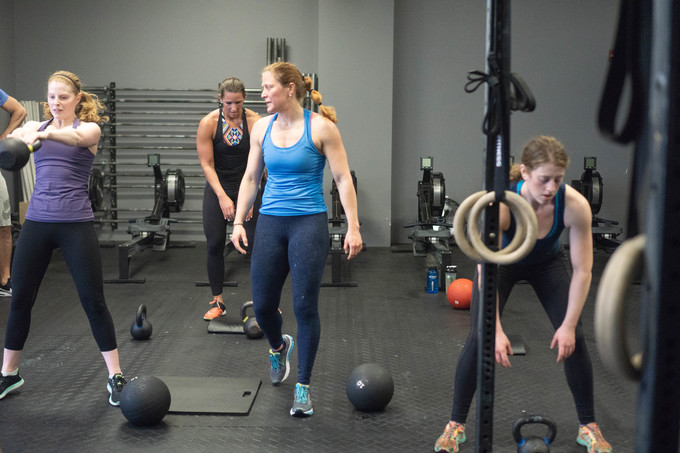BTY Training Lab: Your Macros and Your Lifestyle
June 24, 2018
 By Bryce Wood
By Bryce Wood Bryce Wood is the owner and lead coach of Better Than Yesterday Training Lab in Chicago. Registered D10 athletes can RSVP for complimentary spots at BTY's Saturday morning training sessions between now and The D10 Chicago 2018.
Read the first two parts of Bryce's three-part series here.
At BTY Training Lab, we start by setting up your nutrition plan around your lifestyle: when you like to wake up, eat, work, work out, have meetings, have outings, and sleep. Shouldn't your nutrition plan fit into your life, rather than the other way around?
Then you build your plan around the following principles.
1. It’s long term sustainable.
As you might guess, most diets that produce quick-fix results end up leading you right back to where you started. Be leery of amazing short-term before-and-after programs. If you're looking at pictures to gauge results, look for pictures that show you long-term changes: 6 months to several years.
2. You’re consistently able to hit your daily/weekly calorie goal.
Again, how you determine your goal is a function of how you like to live your life. If you’re someone who is comfortable eating the same quantities each day, go with having a daily goal. If you’re someone who likes to indulge a little more on the weekend, go with a weekly goal, where you can subtract calories throughout the week, then add them back during the weekend.
Example 1
Every Day Same Goal - Sunday through Saturday you eat 1850 calories/day (1850 x 7 = 12,950 weekly calorie goal)
Example 2
Weekend Surplus Goal - Monday through Friday you eat 1590 calories/day. (1590 x 5 = 7,950 weekday calorie goal)
12950 - 7950 = 5000 remaining calories (Saturday and Sunday you get 2,500 calories/day)
Example 3
One-Day Surplus Goal - Sunday through Friday you eat 1650 calories/day. 1650 x 6 = 9900 calories.
12950 - 9900 = 3,050 one-day calorie surplus.
In all three examples, we’re hitting the same weekly calorie goal. In the long run, hitting your weekly budget is what will keep you on track. Even the healthiest of weekday eaters won't lose weight or get leaner if they entirely lose track of their weekend surplus.
3. You’re consistent with your protein goal.
The ranges listed above for protein goals are going to be what optimize your results. As long as the level you’ve established for yourself is sustainable and you can stick with your weekly caloric allotment. Making sure that you stay within your range and are hitting your calories, you are going to be successful for performance, recovery, and body composition.
4. Align your carbs and fat with your habits.
When you are actively training, carbohydrates are your body’s preferred macronutrient for performance. Days you’re more active, you’ll typically feel and perform better on carbohydrates than on fats. Days you are a little more sedentary, you can swap in fats for carbs.
Picking Foods to Make Your Macros Work for You
The great thing about eating with this mindset is that it allows for any and all foods to fit. You can allot your calories and Macros to any food, as long as you plan and budget for it. Going out to dinner, drinks, dessert - anything - can work with a little planning. Similar to setting up a monetary budget, you can spend your money any way you want as long as you're keeping track of your totals. If you’re someone who likes to keep things simple, picking foods that are primarily from one Macro group is a straightforward way to make it work.
Lean Protein Sources - Chicken/Turkey Breast, Shellfish, White Fish, Egg Whites, Protein Powders (check the macros on labels), Lean Red Meat, Pork, Game Meat
Be aware of fat in your protein sources. Even some powders can include 5-10g. If your fat goal is low, these can add up quickly. Most servings of meat are listed at 4 oz, and the difference between 0g and 5g/serving is substantial when you’re on a high protein diet.
Carb Dominant Sources - Fruits, vegetables, tubers, legumes, whole grains (small amounts of protein and fat in these, but they should be considered primarily as carb sources)
If you’re looking for the healthiest choice, opt for fiber-rich carb sources.
Fat Dominant Sources - Oils, Butters, Avocado, Nuts, Seeds, Cream Protein/Carb Combo Sources - Low Fat/Fat Free Dairy, Beans, Quinoa, Lentils
Protein/Fat Combo Sources - Full Fat Dairy, Bacon, Eggs, Poultry Thigh Meat, Salmon, Most Cuts of Steak
Protein/Fat/Carb Combo Sources - Most protein bars
Do some homework on your protein/fat sources, especially if you’re someone who likes to go out to eat. Even if they're not cooked in oils, fat sources can put you in a calorie surplus quickly.